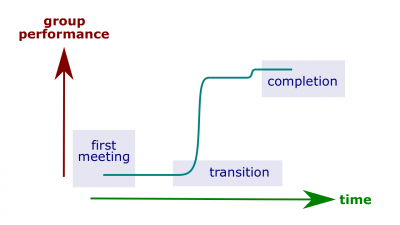Difference between revisions of "Punctuated-equilibrium model"
| Line 1: | Line 1: | ||
[[File:Punctuated-equilibrium.png|400px|thumb|right|[[Punctuated-equilibrium model]]]][[Punctuated-equilibrium model]] (hereinafter, the ''Model'') is a set of phases that temporary groups go through that involves transitions between inertia and activity. | [[File:Punctuated-equilibrium.png|400px|thumb|right|[[Punctuated-equilibrium model]]]][[Punctuated-equilibrium model]] (hereinafter, the ''Model'') is a set of phases that temporary groups go through that involves transitions between inertia and activity. | ||
| + | |||
| + | ==Definitions== | ||
| + | According to [[Organizational Behavior by Robbins and Judge (17th edition)]], | ||
| + | :[[Punctuated-equilibrium model]]. A set of phases that temporary groups go through that involves transitions between inertia and activity. | ||
==Related concepts== | ==Related concepts== | ||
Revision as of 05:08, 26 November 2018
Punctuated-equilibrium model (hereinafter, the Model) is a set of phases that temporary groups go through that involves transitions between inertia and activity.
Definitions
According to Organizational Behavior by Robbins and Judge (17th edition),
- Punctuated-equilibrium model. A set of phases that temporary groups go through that involves transitions between inertia and activity.
Related concepts
- Punctuated equilibrium. The hypothesis that evolutionary development is marked by isolated episodes of rapid speciation between long periods of little or no change.
